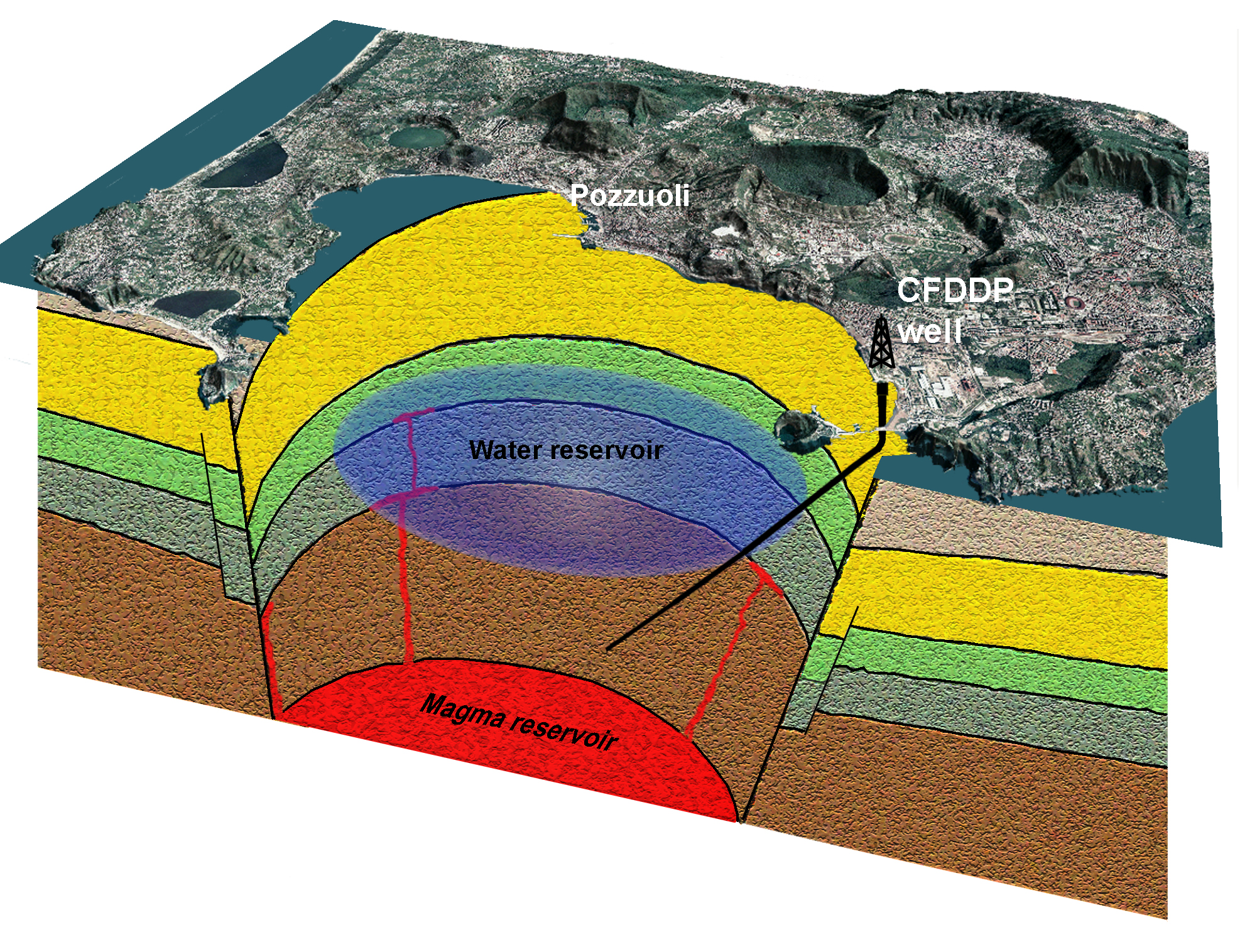Campi Flegrei began to wake up, a volcano near Naples

The volcano Campi Flegrei, next to which the Italian city of Naples is located, began to wake up. This volcano is considered one of the largest in the world, and now the pressure of magma beneath it, according to scientists, has reached a critical point. In fact, we are talking about the fact that the volcano can wake up at any time. And this is very dangerous not only for the inhabitants of Naples, but also for other regions of Italy.
The caldera of the volcano formed 39 thousand years ago, during the largest eruption in this region for 200 thousand years. Perhaps this event was the reason for the resettlement of Neanderthals in the eastern part of the Mediterranean Sea. Now, at times, a small amount of gas escapes from the crater, which indicates that a focus of activity has still remained below the surface. Scientists have been observing Campi Flegrey for many years, and it seems not in vain.
In the 1950s, the surface above the caldera began to move, rising since then by more than 3 meters. Caldera is a vast circus-shaped basin of volcanic origin, often with steep walls and a more or less even bottom. Such a depression of the relief is formed on the volcano after the collapse of the walls of the crater or as a result of its catastrophic eruption.
In the 1980s, this process accelerated; several earthquakes also occurred in the region. Scientists then already began to suspect that the volcano was beginning to gradually wake up. Nevertheless, everything unexpectedly ended and Campi Flegrey calmed down for several years - until 2005. Since then, the surface began to rise again, the level increased by 0.4 meters. Under the caldera of the volcano, magma gradually accumulates.
Due to fluctuations in the upper crust caused by volcanic activity, the coastal part of the city of Pozzuoli plunged into the water . Now this region is located at a depth of 10 meters and is a tourist attraction. Tourists study the part of the city that has sunk to the bottom of the sea with the help of special vessels with a porthole inserted at the bottom. As for the eruption of the volcano, it is not so easy to predict, and even regular earthquakes or gas emissions from the crater are not always a clear sign of the awakening of the "fiery mountain". Specialists from the National Institute of Geophysics and Volcanology of Italy ( National Institute of Geophysics and Volcanology
) led by Professor Giovanni Chiodini (Giovanni Chiodini) decided to use a new method for monitoring the activity of the volcano. This method, according to experts, can serve as a reliable tool for identifying awakening volcanoes.

It consists in monitoring heat transfer from magma to nearby rocks, as a result of the release of water vapor from magma. When magma comes close to the surface, the pressure decreases slightly, which allows carbon dioxide, water vapor and other gaseous compounds to go higher. Water vapor is an excellent coolant that distributes heat to nearby rocks and condenses. As soon as magma heats the surrounding rocks, heat flows upward. The rocks are heated, their strength is reduced, which leads to deformation of the overlying layers. If heating from below continues, it can lead to eruption.
Italian scientists decided to use a computer model in order to clarify the behavior of upward gases and steam. When the pressure on the rocks at the point of contact between the magma and the crust reaches a critical value, gases and water vapor rise even more actively, which can be determined using tools. The increase in the volumes of gases escaping from magma, according to Italians, is a reliable sign of the imminent awakening of the volcano.
A computer model showed that water vapor is now being released much more actively than before. As a result, the rock layers located above the magma warmed up to 60 degrees Celsius. More importantly, the model demonstrated that the magma reached critical pressure, after which the active phase of the volcanic awakening begins.
Unfortunately, an accurate forecast of the time of awakening cannot be made. A volcano can wake up both in a few years and in a few decades. The model used by scientists does not allow us to study the structure of the volcano in order to understand when and how rising magma will break out. And the volcano itself is a very complex system that can either suddenly fall asleep or wake up no less unexpectedly. For example, cooling, gas-free magma can freeze, blocking the outlet to the hotter layers. The sleep period between 1984 and 2005 is an example of such a "dream".
No doubt half a million people living next to the caldera are in danger. The eruption itself will not necessarily be as powerful as 39 thousand years ago. This volcano erupted and less actively, for example, in 1538 .
DOI:10.1038 / ncomms13712
